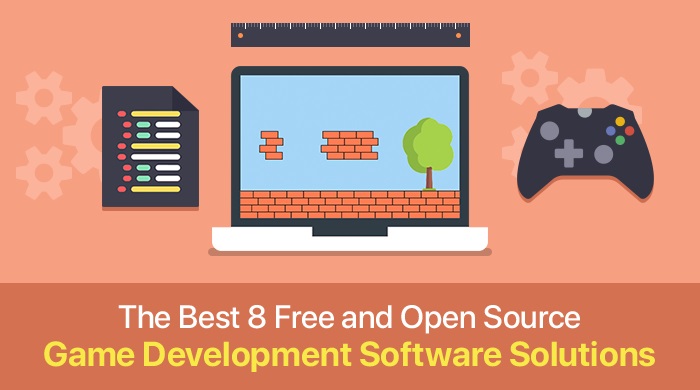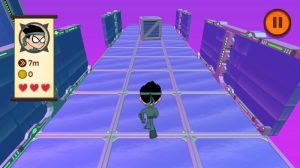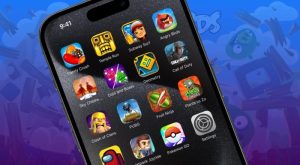
Ever dreamed of crafting your own video game? Forget expensive software – a world of free game development tools awaits! From pixelated 2D adventures to sprawling 3D epics, you can bring your gaming vision to life without breaking the bank. This journey will explore the best free options, guiding you through the process of building your game, from concept to creation, and even touching on the exciting (and sometimes tricky!) world of online game development.
We’ll dive into powerful game engines like Unity and Godot, discover treasure troves of free assets, and navigate the legal landscape of using free resources for commercial projects. Get ready to level up your game development skills – and your creativity!
Overview of Free Game Development Tools
Creating games can be a thrilling journey, and thankfully, you don’t need a hefty budget to get started. A wealth of free game development tools are available, empowering aspiring game developers to bring their visions to life. This overview explores some of the most popular options, their capabilities, and the considerations involved in using them for commercial projects.
Free Game Development Tools: A Categorized List
Choosing the right tool depends on your project’s scope, your programming experience, and your desired platform. The following table provides a snapshot of some prominent free options, highlighting their strengths and weaknesses.
| Tool Name | Platform | Engine Type | Key Features |
|---|---|---|---|
| Godot Engine | Windows, macOS, Linux, Web | 2D/3D | Open-source, versatile, beginner-friendly, GDScript (its own scripting language), supports various export targets. |
| Unity (Personal Edition) | Windows, macOS, Linux | 2D/3D | Powerful, widely used, large community support, C# scripting, extensive asset store (though not all assets are free), limited commercial usage in the Personal Edition. |
| GameMaker Studio 2 (Free Edition) | Windows, macOS | 2D | User-friendly drag-and-drop interface, GML scripting, suitable for beginners, limited export options in the free edition. |
| Buildbox | Windows, macOS | 2D | Intuitive visual scripting, easy to learn, ideal for casual games, limited functionality compared to more advanced engines. |
| Unreal Engine (Free) | Windows, macOS, Linux | 3D | Powerful, industry-standard engine, Blueprint visual scripting, C++ support, extensive features, royalty payments only after exceeding a revenue threshold. |
Examples of Successful Games Made with Free Tools
Many successful games have leveraged the power of free game development tools. These examples demonstrate the potential for creating compelling experiences even with free software.
For instance, VVVVVV, a critically acclaimed puzzle platformer, was developed using GameMaker. Its unique upside-down gravity mechanic and minimalist art style captivated players, showcasing how a simple tool can produce a highly engaging experience. The target audience was fans of challenging puzzle games and retro aesthetics.
Another example is Undertale, a role-playing game with a distinctive narrative and innovative combat system. While not entirely developed with entirely free tools, a significant portion of its development utilized free software and open-source libraries. Its target audience was players seeking a unique story-driven experience and unconventional RPG mechanics.
Licensing Implications for Commercial Projects
Using free game development tools for commercial projects involves understanding their respective licenses. Many, like Godot Engine, are open-source and offer permissive licenses (like the MIT License), allowing for commercial use without significant restrictions. However, always carefully review the license agreement of the specific tool you are using. Some tools, like Unity’s Personal Edition and Unreal Engine’s free version, have limitations on commercial use, often involving revenue thresholds or restrictions on the type of projects you can create.
Ignoring these stipulations could lead to legal issues. For instance, exceeding revenue limits on a free license could require switching to a paid license or paying royalties. Always consult the tool’s licensing documentation to avoid any potential problems.
Game Engines

Choosing the right game engine is a crucial first step in game development. The landscape is vast, but thankfully, several excellent free options exist, each with its own strengths and weaknesses. This section will compare three popular choices: Unity, Godot, and Unreal Engine’s free tier, helping you decide which best suits your needs and project.
Free Game Engine Comparison
The following table compares Unity, Godot, and Unreal Engine (free tier) across key features. Remember that these are general observations and individual experiences may vary.
| Feature | Unity | Godot | Unreal Engine (Free) |
|---|---|---|---|
| Ease of Use | Steeper learning curve, extensive documentation and tutorials available. | Relatively easy to learn, intuitive interface, strong community support with readily available tutorials. | Moderate learning curve, powerful but complex features. |
| 2D Capabilities | Excellent, with dedicated 2D tools and features. | Excellent, built-in support for 2D physics and rendering. | Good, but often requires more workarounds than dedicated 2D engines. |
| 3D Capabilities | Excellent, industry-standard for 3D game development. | Good, constantly improving 3D features and capabilities. | Exceptional, renowned for its high-fidelity graphics and realistic rendering. |
| Scripting Language | C# | GDScript (Python-like), C#, C++, others. | C++ (Blueprint visual scripting available) |
| Community Support | Massive and active community, extensive resources available. | Growing rapidly, very helpful and active community. | Large community, but can be less beginner-friendly than Unity’s or Godot’s. |
| Licensing | Free for personal and commercial use (with limitations for certain revenue thresholds). | Completely open-source and free for all purposes. | Free for personal and commercial use (with royalties after revenue thresholds are met). |
Creating a Basic 2D Game in Godot
Godot’s ease of use and open-source nature make it an excellent choice for beginners. Let’s Artikel the process of creating a simple 2D game: a bouncing ball.First, we’d create a new project in Godot. The initial interface would show a blank scene. Then, we would add a Sprite node to the scene. This would be our ball.
We would import a simple image for the ball’s texture. Next, we’d add a `RigidBody2D` node as a child of the Sprite node to give the ball physics properties. We’d adjust the `gravity_scale` property to control how the ball falls and potentially add a `CollisionShape2D` to enable collision detection. Finally, we’d write a small script (using GDScript) to add simple bouncing behavior when the ball collides with the edges of the screen.
This would involve using Godot’s built-in functions for detecting collisions and changing the ball’s velocity.*(Imagine a screenshot here showing the Godot editor with a simple scene containing a ball sprite. Another screenshot could show the GDScript code for the ball’s movement. A final screenshot would show the game running, with the ball bouncing.)* The scene setup would be intuitive and visual, making the process straightforward, even for someone new to game development.
The script would be concise and easy to understand, due to Godot’s Python-like GDScript.
Limitations of Free Game Engine Versions
While free game engine versions offer incredible power and functionality, they naturally come with some limitations compared to their paid counterparts. For example, Unity’s free version has restrictions on revenue, limiting its suitability for commercial projects exceeding certain income thresholds. Unreal Engine’s free tier also requires royalty payments once your project earns beyond a specified amount. Feature sets might also be slightly reduced in free versions, with access to advanced features or plugins often reserved for paid licenses.
Support and access to certain asset stores might also be limited. These limitations generally focus on scaling projects for commercial use and accessing the most advanced features, making the free tiers perfectly suitable for learning and smaller projects.
Asset Creation for Free Games
Creating compelling visuals and sounds is crucial for a successful game, even a free one. Fortunately, a wealth of free resources and tools are available to help aspiring game developers bring their visions to life without breaking the bank. This section explores where to find these assets and how to create your own using readily available software. We’ll also delve into the legal aspects of using free assets in your projects.
Free Asset Resources
Finding free, high-quality assets can significantly reduce development time and costs. Many websites and platforms offer a wide variety of resources, often under Creative Commons licenses or similar terms. It’s vital to understand the specific license terms before using any asset, to ensure you comply with the legal requirements.
- Sound Effects: FreeSound.org is a vast library of user-submitted sound effects, covering a wide range of categories. Another excellent resource is SoundBible.com, which offers a curated selection of royalty-free sounds. Remember to always check the license associated with each sound before using it.
- Music: Incompetech.com provides a substantial collection of royalty-free music tracks, categorized by genre and mood. Musopen.org offers a large library of classical music in the public domain, perfect for adding a classical feel to your game. These resources offer a wide variety of styles to match your game’s atmosphere.
- Sprites (2D Images): OpenGameArt.org is a dedicated repository for free game assets, including a large selection of 2D sprites. Many individual artists also share their work on sites like DeviantArt and itch.io, often under Creative Commons licenses. Always verify the license before using any sprite.
- 3D Models: Sketchfab.com features a diverse collection of 3D models, some of which are available for free under various licenses. TurboSquid also offers free 3D models, but carefully review the license agreement for each model to ensure its suitability for your project. Free 3D models are often simpler than paid options but can still be highly effective.
Creating Simple 2D Sprites with Aseprite
Aseprite is a popular and powerful 2D pixel art editor. While not entirely free (it has a paid license), a trial version is available, providing ample time to create simple sprites. This tutorial will guide you through the process of creating a simple character sprite.
- Opening Aseprite: Launch Aseprite and create a new file. Choose a suitable size for your sprite (e.g., 32×32 pixels for a simple character). Select a transparent background.
- Drawing the Base: Use the pencil tool to draw the basic shape of your character. Start with simple shapes and gradually add details. Experiment with different colors to find a suitable palette.
- Adding Details: Use the pencil or brush tool to add details like eyes, mouth, and limbs. Consider using different layers for different parts of the character to allow for easier editing and animation.
- Coloring: Select a limited color palette to maintain a consistent style. Use the fill tool to color in the different parts of your character. Consider using shading to add depth and dimension.
- Exporting: Once you’re satisfied with your sprite, export it as a PNG file. This format supports transparency, which is essential for game development.
Legal Considerations for Using Free Assets
Understanding the legal implications of using free assets is paramount. Misunderstanding license terms can lead to legal issues and even the removal of your game from platforms.
- Attribution: Many free assets require attribution, meaning you need to give credit to the original creator. This usually involves including their name or a link to their website in your game’s credits.
- Modification: Some licenses allow modification of the assets, while others don’t. Always check the license to ensure you’re allowed to make the changes you need.
- Commercial Use: Not all free assets are allowed for commercial use. If you plan to monetize your game, carefully review the license to confirm that commercial use is permitted.
- Best Practice: Always download assets from reputable sources. Read the license agreement carefully before using any asset. When in doubt, contact the asset creator to clarify any uncertainties.
Online Game Development and Related Topics
Developing online games presents a unique set of challenges and opportunities compared to their offline counterparts. The shift from a single-player experience to a massively multiplayer environment introduces complexities in server architecture, networking, and player interaction management. However, the potential for broader reach, recurring revenue streams, and community building offers significant advantages. This section explores these aspects, focusing on specific niches within the online gaming landscape.
Challenges and Opportunities in Online Game Development
Online game development necessitates expertise in areas beyond traditional game design. Scalable server infrastructure capable of handling thousands of concurrent users is crucial, requiring significant investment in hardware and software. Maintaining a stable and secure online environment is paramount, demanding robust anti-cheat measures and continuous monitoring to prevent exploits and server crashes. Furthermore, the ongoing nature of online games necessitates regular content updates and community engagement to retain player interest.
Conversely, the potential for monetization through microtransactions, subscriptions, and in-game purchases offers significant revenue opportunities that are often unavailable in offline game models. The creation of a vibrant community around a successful online game can also lead to increased longevity and brand loyalty.
Examples of Successful Online Games for Girls
Several online games have successfully targeted female audiences by offering engaging gameplay, strong female characters, and social features. Games like
- Animal Crossing* prioritize social interaction and customization, allowing players to create their own unique virtual worlds and interact with others. The
- Sims* franchise allows players to build relationships, manage careers, and express their creativity in a highly personalized environment. These games often avoid violent themes and instead focus on nurturing, creativity, and community building, catering to the preferences of a broad female demographic. The success of these titles demonstrates the importance of understanding target audience preferences when designing online games.
Comparison of Online Game and Online Casino Game Development
The development process for a typical online game differs significantly from that of an online casino game. While both require robust server infrastructure and networking capabilities, online casino games necessitate rigorous security measures to ensure fairness and prevent fraud. Random Number Generators (RNGs) are central to online casino games, requiring thorough testing and certification to comply with regulatory standards.
Monetization strategies also differ significantly. While online games often rely on microtransactions, subscriptions, or advertising, online casino games primarily generate revenue through the house edge inherent in the games themselves. The development process therefore emphasizes robust security, verifiable fairness, and compliance with stringent gambling regulations.
Legal Landscape of Online Gambling
The legal landscape surrounding online gambling varies significantly across jurisdictions. Some countries have fully legalized and regulated online casinos, while others maintain strict prohibitions. Many jurisdictions operate under a grey area, with varying degrees of tolerance or outright bans. The following table summarizes the legal status in select regions (Note: This is a simplified overview and specific regulations are subject to change.
Consult legal professionals for accurate and up-to-date information):
| Region | Legal Status |
|---|---|
| United Kingdom | Regulated |
| Malta | Regulated |
| United States | Varied by state |
| China | Illegal |
Role of Online Casino Affiliates
Online casino affiliates act as marketing intermediaries, driving traffic to online casinos in exchange for a commission on generated revenue. They employ various marketing strategies, including search engine optimization (), paid advertising (PPC), and content marketing. Their revenue models typically involve revenue share agreements, CPA (Cost Per Acquisition) models, or hybrid approaches. Affiliates play a crucial role in acquiring new players for online casinos, contributing significantly to their overall marketing efforts.
Risks and Rewards of Online Casino Free Spins and Bonuses
Online casino free spins and bonuses offer players the chance to try out games and potentially win real money without risking their own funds. However, these offers often come with wagering requirements, which dictate how many times a bonus must be wagered before winnings can be withdrawn. High wagering requirements can significantly reduce the chances of actually cashing out winnings.
Furthermore, bonuses may come with time limits, restricting the timeframe within which players can meet the wagering requirements. While free spins and bonuses can be a rewarding way to experience online casinos, players should carefully review the terms and conditions before accepting them to avoid potential disappointment.
Responsible Online Gambling Advice
Responsible online gambling involves setting realistic budgets, establishing time limits, and recognizing the potential risks of addiction. Players should only gamble with money they can afford to lose and avoid chasing losses. Utilizing self-exclusion tools offered by online casinos can help manage gambling habits. Seeking help from organizations dedicated to problem gambling is crucial if gambling becomes detrimental to one’s well-being.
Remember, gambling should be viewed as entertainment, not a means to generate income.
Summary

So, there you have it! The world of free game development is vast, exciting, and surprisingly accessible. Whether you’re a seasoned programmer or a complete beginner, the resources and tools are available to help you realize your game design dreams. Remember to explore, experiment, and most importantly, have fun bringing your unique gaming vision to life. Who knows, your next indie hit might be just around the corner!
Clarifying Questions
What are the limitations of free game development tools?
Free tools often lack the advanced features, robust support, and extensive asset libraries of their paid counterparts. You might encounter limitations in scalability, rendering capabilities, or access to certain plugins.
Can I use free assets in commercial games?
It depends on the license! Always check the license of any asset you use to ensure it permits commercial use. Some licenses require attribution, while others are completely restrictive.
Which free game engine is best for beginners?
Godot is often recommended for beginners due to its user-friendly interface and comprehensive documentation. Unity also has excellent learning resources, but it has a steeper learning curve.
Where can I find free game music and sound effects?
Websites like freesound.org and incompetech.com offer a wealth of royalty-free audio resources. Always double-check the license before using them.






